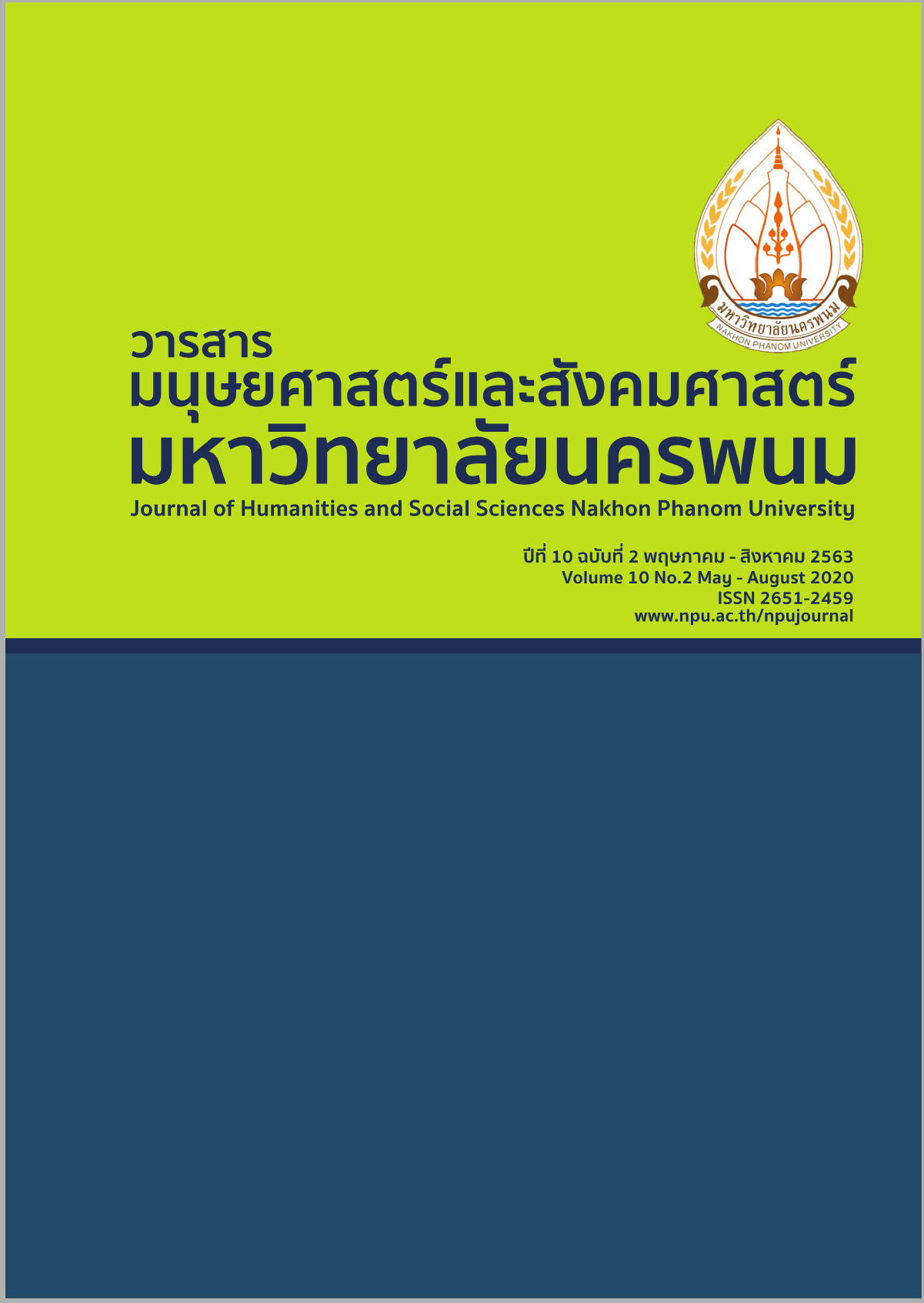The Development of Music Teaching Model forThai Folk Song (Luk Thung) Musical Band in Secondary School
Main Article Content
Abstract
This Research and Development (R&D) study aimed 1) to develop music teaching model for Luk Thung musical band in secondary school; and 2) to evaluate the quality of the developed teaching model. The samples divided into 2 groups. The first group was 5 Luk Thung musical band teachers who provided
qualitative data and the second group was a Luk Thung musical band which was an experimental group. The instruments used to collect the data were the completed music teaching model for Luk Thung musical band in secondary school, quality and suitability evaluation form, learners’ skills development assessment form and opinions towards the quality of the developed teaching model evaluation form.
The results suggested that 1) music teaching model for Luk Thung musical band in secondary school could be presented in 2 models which were semantic model and schematic model. There were 7 steps included in the process of the model: 1. identifying desired goals in Luk Thung music teaching and learning, 2. understanding the goals and designing lesson and teaching plan, 3. managing the related elements of the lesson and teaching plan, 4. implementing the lesson and teaching plan, 5. improving and editing the plan, 6. implementing the improved plan and 7. receiving the feedback. Moreover, essential elements of the teaching model were handbook for Luk Thung musical band in secondary school music teaching model, musical practice handbook in wind instruments and percussion instruments and learners’ skills development assessment form; and 2) The results from quality and suitability evaluation form from the experts showed that the model was suitable to be implemented at the highest level (= 4.68, S.D.= 0.46) and the results from the learners’ skills development assessment form, in overall aspect, was also at the highest level ( = 87). In addition, the opinions from Luk Thung musical band teachers towards the quality of music teaching model for Luk Thung musical band in secondary school was at the highest level ( = 4.85).
Article Details
References
Johnson, K.A. ,and Foa,L.J. (1989). Instructional Design : New Alternatives for.
EffectiveEducation and Training. New York : Macmillan Publishing company.
Keeves, J.P. (1997). Education research, methodology, and measurement: An
International. handbook. Oxford : Pergamon Press.
Kemp, J.E., Morrison, G., Ross, R. and Steven, M. (1994). Designing Effective Instruction. New York : Macmillan
College.
Khammanne, T. (2007). Teaching pedagogy: Body of knowledge for effective
learning management (6th ed.). Bangkok: Chulalongkorn University Press.
________.(2009). Teaching pedagogy: Body of knowledge for effective
learning management (10th ed.). Bangkok: Chulalongkorn University Press.
Khlaisri.P. (2017). Development of the instructional model using blended learning and metacognition
for Faculty of Education Students in Rajabhat University in the Northeastern. College of Education :
Dhurakij Pundit University
Sairat, S. (2016). Development of learning management for E-San Folk Music to
promote musical skills and self-esteem of Mathayomsuksa 1 students, basedon the multiple intelligences and cooperative learning approaches (Master’sthesis). Mahasarakham: Graduate School, Mahasarakham University.
Srisa-ard, B.(1994). Development of teaching (1st ed.). Bangkok: Suweeriyasarn.
Suttajit, N. (1997). Activities for teachers. Bangkok: Chulalongkorn University.
________.(1997). Behaviors in music teaching. Bangkok: Chulalongkorn University.
Thanakittiphum, W.and Sappaso, P. (2016). Problems and development guidelines formusic teaching in
secondary educational level of demonstration schools in Northeastern, Thailand. Journal of Education Khon Kaen University (Graduate Studies Research), 10(3), pp. 187-193.


